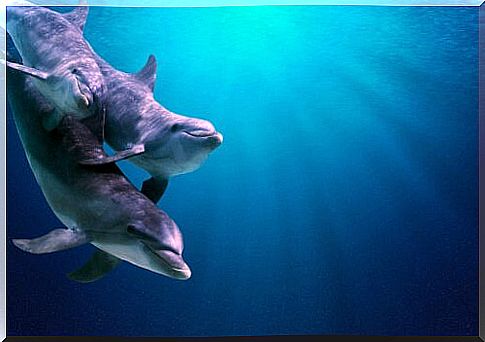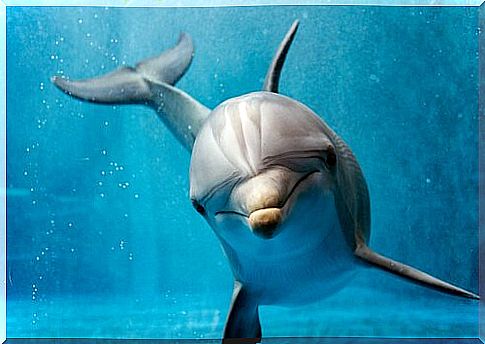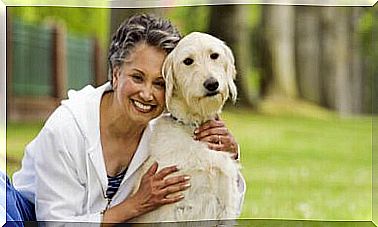How Do Dolphins Dive?

One of the biggest mysteries for humans is how dolphins dive, and so do other cetaceans. These marine mammals have lungs instead of gills. Therefore, they must struggle with the decompression that their bodies undergo during immersion.
What is Diver Disease?
The so-called diver’s disease was first observed in 1839. When divers return to normal atmospheric conditions, the gases dissolved in the blood form gas bubbles and can cause heart attacks in different organs.
So that divers do not suffer from this disease, they must breathe a gaseous mixture before immersion, and make stops during the descent.
That’s why many people are surprised to learn how dolphins dive, in addition to other marine mammals, so similar to us in some aspects, such as their respiratory and circulatory system.
The main element that turns to gas as it quickly rises to the surface is nitrogen, which can cause this dangerous disease.
Therefore, it was suspected that when dolphins dive, they must have mechanisms active to process this gas.

What happens when dolphins dive?
How do dolphins dive? With them, this syndrome only happens when they suffer episodes of acute stress, such as when they get caught in fishing nets or are frightened by sonar or earthquakes.
According to experts, it appears that cetaceans can actively reduce nitrogen absorption during diving.
Thus, they reduce the risk of suffering from this disease. These mechanisms would be related to the particular architecture of your cardiorespiratory system.
All mammals need to breathe air to live. In the case of cetaceans, when submerging, their lungs compress due to the high pressure.
Thus, they gradually decrease in size and nitrogen, among other gases, gets into the blood. Therefore, when dolphins and other marine mammals such as orcas dive, they are able to avoid the exchange of gases between their lungs and blood.

How do dolphins dive? What about other cetaceans?
The cetaceans have other mechanisms for diving. For example, the spiracle. This is a hole that allows, when dolphins dive, they can breathe with their head submerged. Breathing in cetaceans is voluntary and the spiracle allows the elimination of water.
Dolphins’ lungs are thought to have other adaptations that help prevent scuba diver syndrome.
They have no lobes and are smaller than those of terrestrial mammals. Furthermore, when dolphins dive, they can absorb 90% of the oxygen in their lungs. Humans can only absorb 20%.
Cetaceans must return to the surface from time to time to inhale through the spiracle. For example, if we look at Mediterranean cetaceans, we see that dolphins can spend up to 10 minutes underwater. Meanwhile, rorqual stays for up to half an hour, and sperm whales up to two hours underwater.
What is clear is that the more we know about these animals, how they communicate, dive or migrate, the more we marvel, and the feeling of wanting to protect them only increases.








